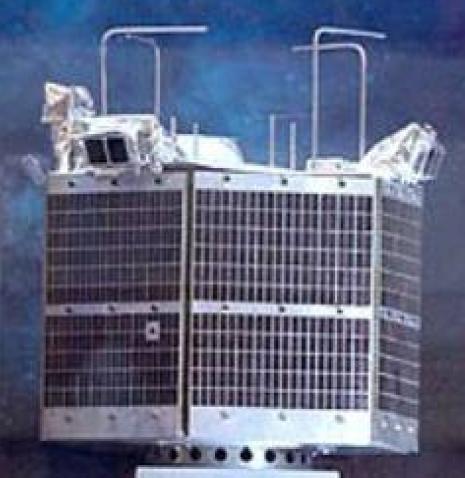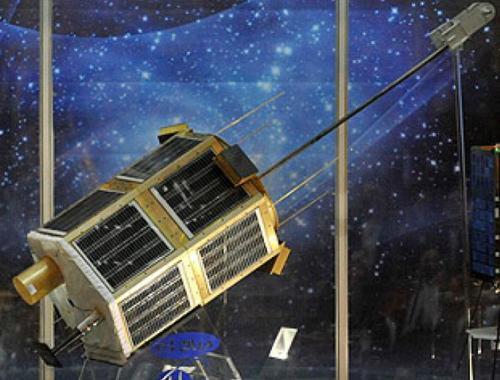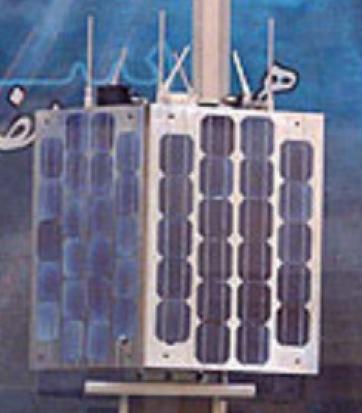Iran has outlined an ambitious space plan for the coming years. While a lot of conflicting information has been reported, here is our current understanding of the program.
Last week, the head of the Iranian Space Agency, Hamid Fazeli, announced that Iran would be launching two more satellites, the Fajr and Navid satellites in the next year, and that Kavoshgar 5 (Explorer 5), a 285 kg space capsule, would carry animals into space on a suborbital trajectory.It looks, then, that Iran’s current schedule is to launch Kavoshgar 5 in Mordad (the fifth month of the Iranian calendar, July 22-August 22), Fajr in October 2011, and Navid-Elmo-Sannat (also called Ya Mahdi) in February 2012. Because the launch pad will likely need 2-3 months to be prepared between launches, this pace seems to be about as fast as possible until Iran’s second launch pad is built. (Jane’s estimates that it could be ready by 2013.)
However, the recent launch of the Rasad had been originally planned for last August, and the Fajr launch was reportedly scheduled for March 2010, so these dates may well slip.
Fajr Satellite
Iran says the Fajr (Dawn) satellite is ready to go. This satellite reportedly uses improved solar cells that will allow it to function in orbit for a year and a half. This seems consistent with Iran’s plan to put the satellite into a higher orbit than its first two satellites. Those satellites were launched in low orbits in which they experienced significant atmospheric drag—enough to limit their lifetime to a few months.
The 50 kg Fajr satellite is roughly 50 cm tall and 65 cm across and was reportedly built by Iran’s Defense Ministry. Reports say it’s designed to maneuver after launch from an initial elliptical orbit of 300 x 450 km to a circular orbit of 450 km, at which a year and a half lifetime is a reasonable expectation.

Fajr satellite
This orbital change appears to indicate the first time that one of Iran’s satellites will have on-board thrusters to allow it to maneuver in orbit. Changing from the initial elliptical orbit to a 450-km circular orbit requires a velocity change (delta-V) of 0.1 km/s. One source says it will use a pulse plasma thruster, which is powered electrically. Assuming Iran has such a thruster it could in principle carry out this maneuver with less than 1 kg of propellant, but its very low thrust would mean the maneuver might take many months. This seems impractical. A small chemical thruster would require a couple kilograms of propellants but could bring about the maneuver much faster.
The Fajr mission appears to be more about testing systems and orbital control and navigation capabilities than about reconnaissance. Fajr is reportedly equipped with a domestically made GPS navigation system to help Iran keep track of its orbit. It is intended to transmit images with a resolution of 500-1000 meters. (Recall that the resolution of Google Earth images for most of the earth is about 15 meters and for images of the United States is about 1 meter or better.)
The Fajr satellite will reportedly be launched by the Safir-1B, which is a modification of the vehicle used for the two previous satellite launches (Omid and Rasad).
Navid Satellite
The Navid research satellite was reportedly built by students at the Iran University of Science and Technology. Like Fajr it is a small satellite, 55 x 60 x 50 cm in size with a mass of 50 kg. It is reportedly designed to take black and white photographs with a resolution of around 400 meters and transmit them to earth, and is intended to orbit in a 250 x 375 km elliptical orbit at 55° inclination.

Kavoshgar-5 Mission
The Kavoshgar-5 (Explorer 5) launcher is intended to carry a small, 285-kg space capsule on a sub-orbital trajectory. Reports say it will carry a live monkey to an altitude of 120 km on its brief journey and come back to Earth. Kavoshgar-3 reportedly carried a rat, turtles, and worms on a similar experiment in early 2010. The Kavoshgar-4 launch in March 2011 did not carry live animals, but reportedly was designed to carry a monkey and hosted a monkey doll.
Tolou Satellite
In addition to the satellites above, the head of Aerospace Industries of Iran’s Electronics Industries Co., Asghar Ebrahimi, said in May that Iran would launch the Tolou (Sunrise) satellite in February 2012. The launch date now appears to be later. This may be because Tolou requires a more capable launcher than previous satellites, since it is said to have a mass of 80 kg and will be launched into a 400 km altitude orbit. Reports say it will be launched by the new Simorgh (Phoenix) launcher Iran is developing, which has a first stage that appears to be similar to the North Korean Unha-2 launcher. It is unclear how far along in development the Simorgh might be.
Tolou appears to be roughly 100 cm tall and 70 cm across, and is said to take pictures with 50 m resolution and will stay in orbit for a year and a half. It was designed and built by the Electronics Industries Company, a defense firm in Iran.

Tolou Satellite
Zafar Satellite
Like Navid, the Iran University of Science and Technology is also reported to be developing the Zafar (Victory) satellite. It reportedly has a mass of 90 kg and dimensions of 70 × 35 × 35 cm, and is intended to be placed in a 500 km altitude orbit at an inclination of 55°. Like Tolou, it would need a launcher like Simorgh. It is intended to send back color photos of the earth. No date has been announced for the launch of this satellite.

Zafar satellite
Iran is emphasizing the home-grown nature of its satellite program, which has become increasingly necessary as sanctions have limited its options for collaboration. (For example, Italy has not sent the jointly-developed Mesbah satellite to Iran and Russia refused to launch it because of these sanctions.)
As a result, Iran is fielding satellites from universities and defense contractors and announced its plans to jointly develop satellites with other members of the Asia-Pacific Space Cooperation Organization. The similarity in mass, orbit, and function of a number of Iran’s early satellites, and the fact that they are built by different organizations and have very different designs suggests that Iran may have funded a range of different institutions to develop satellites that could be launched using its existing Safir launcher.
Similarly, Tolou and Zafar may be examples of a group of satellites being designed by different institutions and capable of eventually being launched by Simorgh.
